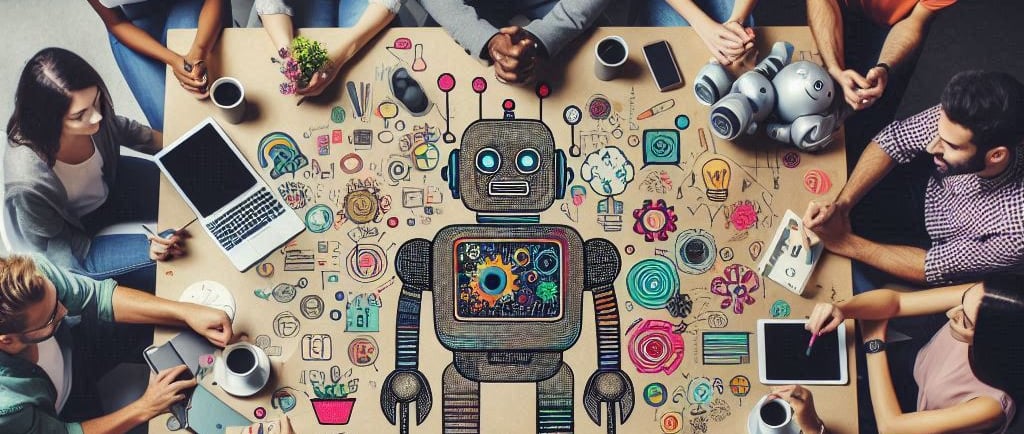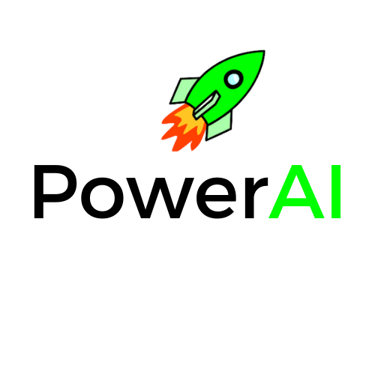The AI Creative Revolution: Reimagining Your Creative Future with these Amazing AI Tools 2024"
Discover how breakthrough AI technologies like Magic Edit, 3D Gaussian Splatting, and Concept Lab are transforming digital creativity. Explore the future of AI-powered content creation. #ArtificialIntelligence #CreativeTechnology #DigitalArt #AITools #ContentCreation #VideoEditing #3DModeling #AugmentedReality #AIMusic #FutureOfCreativity
6/24/20243 min read


Picture this: A filmmaker sits at her desk, transforming ordinary footage of a city street into a breathtaking Chinese ink painting that flows like water across her screen. Across town, a game designer conjures up creatures that have never existed before, while a musician composes a symphony with a few simple prompts. This isn't science fiction—it's the creative landscape of 2024, where artificial intelligence is rewriting the rules of digital artistry.
The Magic Behind the Screen
The most exciting development in this creative revolution is Magic Edit, a breakthrough technology that's turning video editing into something akin to wizardry. Imagine being able to transform your pet dog into a cat with a few clicks, or expand your video frame to reveal beautiful landscapes that never existed in the original footage. This isn't just editing; it's digital alchemy.
But Magic Edit isn't working alone. Enter the Dual Stream Fusion Net, an innovative system that's solving one of the most persistent challenges in AI video generation: quality and consistency. Think of it as having two master artists working in parallel—one sketching out the broad strokes of motion, while the other meticulously refines each frame until the result is smooth as silk.
Beyond Imitation: Creating the Never-Before-Seen
Perhaps the most intriguing development is Concept Lab, an AI that's pushing the boundaries of creativity itself. Unlike traditional AI models that learn from existing data, Concept Lab ventures into uncharted territory, generating entirely new concepts, creatures, and artistic styles. It's as if we've given AI the ability to dream, and it's dreaming up things we've never imagined.
The Rise of 3D and Augmented Reality
The future isn't just about flat images and videos—it's about immersive experiences. 3D Gaussian Splatting is revolutionizing how we create three-dimensional content, turning simple photos into detailed 3D models with unprecedented speed and efficiency. Think of it as digital clay that can be molded and textured with incredible precision.
This technology finds its practical application in tools like Simulon, which brings these 3D creations into our physical world through augmented reality. Want to see how that AI-generated sculpture would look in your living room? Just point your phone, and there it is, as if it were really there.
The Sound of Innovation
But the creative revolution isn't limited to what we can see. Suno AI is pushing the boundaries of music generation, allowing creators to specify genres and styles with remarkable precision. Meanwhile, Podcast AI is transforming audio content creation, generating natural-sounding ad reads that blend seamlessly with human-created content.
The Creator's New Toolkit
These tools aren't just isolated innovations—they're part of a broader ecosystem that's becoming increasingly accessible through platforms like FutureTools.io. The IP Adapter is bridging the gap between imagination and execution, allowing creators to maintain unprecedented control over their AI-generated content.
What This Means for the Future
We're standing at the threshold of a new era in creative expression. These tools aren't replacing human creativity; they're amplifying it, allowing artists, filmmakers, designers, and musicians to push beyond traditional boundaries. The question is no longer "Can AI be creative?" but rather "How will human creativity evolve alongside AI?"
As these technologies continue to develop and interweave, we're likely to see entirely new forms of artistic expression emerge—forms that blend human intuition with AI capabilities in ways we're only beginning to imagine. The creative revolution isn't just coming—it's already here, and it's more exciting than anything we could have predicted.
The tools mentioned here are just the beginning. As we continue to explore and experiment with these technologies, we're not just creating new content—we're creating new ways of creating. And in that process, we're redefining what it means to be creative in the digital age.
Contact us
PowerAI, 91 Springboard, CST Road, Kalina- BKC, Mumbai 400055
*LIVE AI Projects basis publicaly available and AI generated data on leading companies for learning puposes.
© 2024. All rights reserved.
